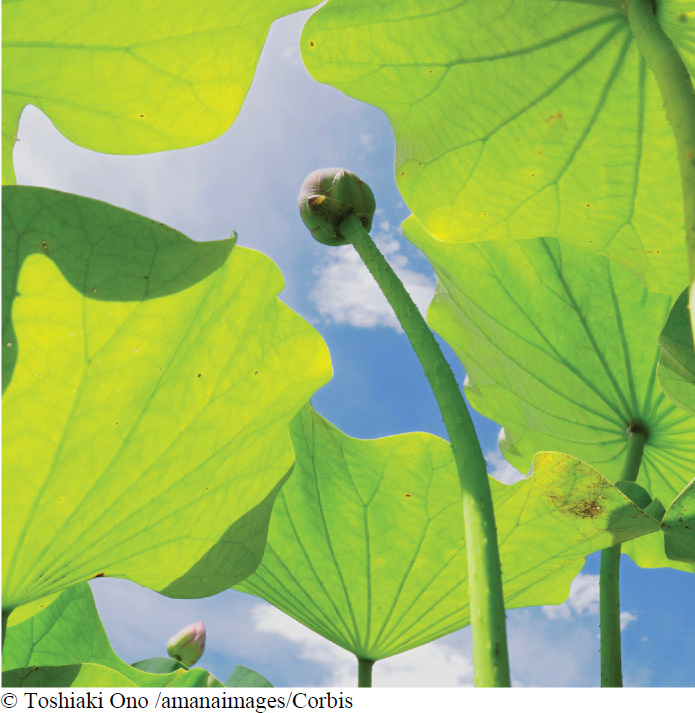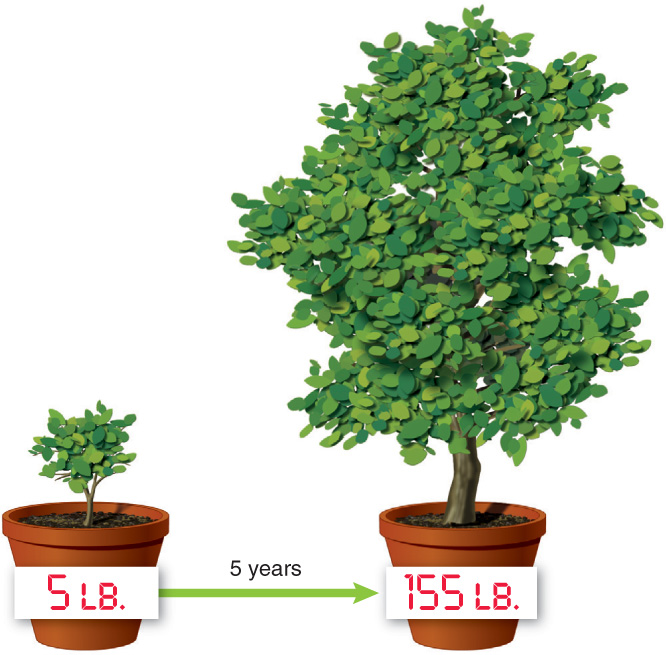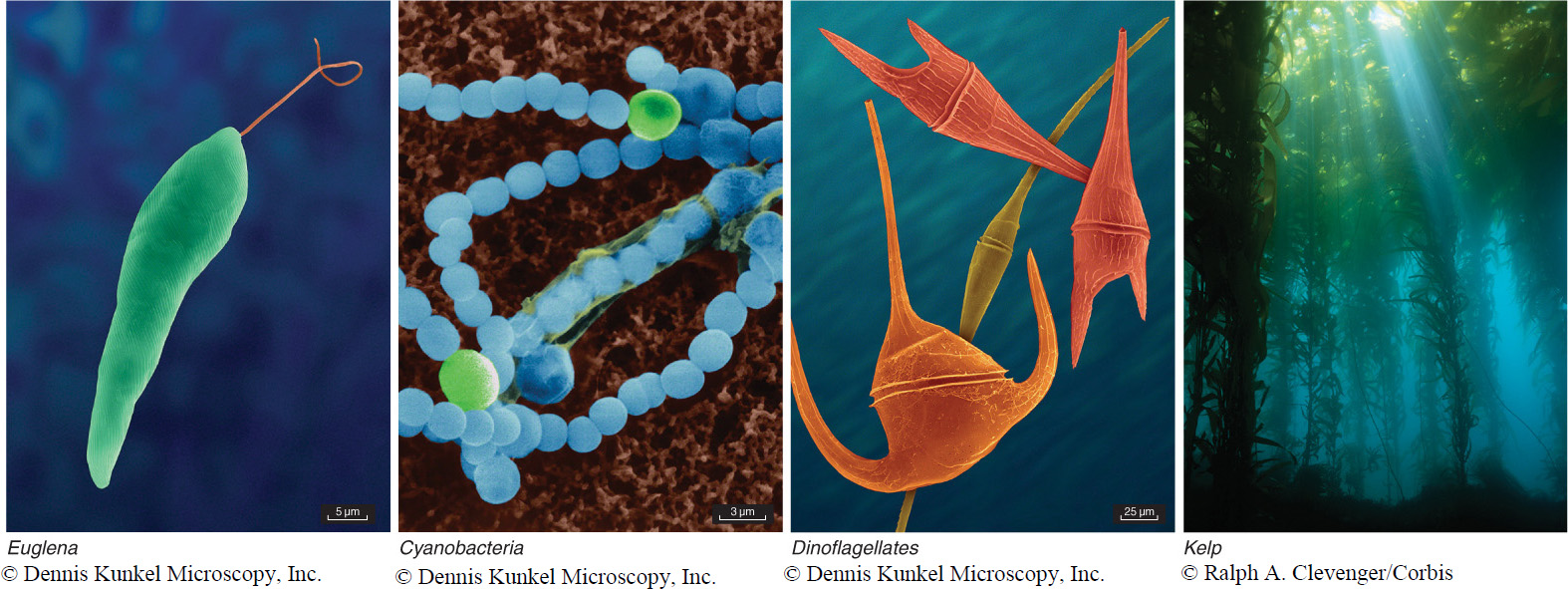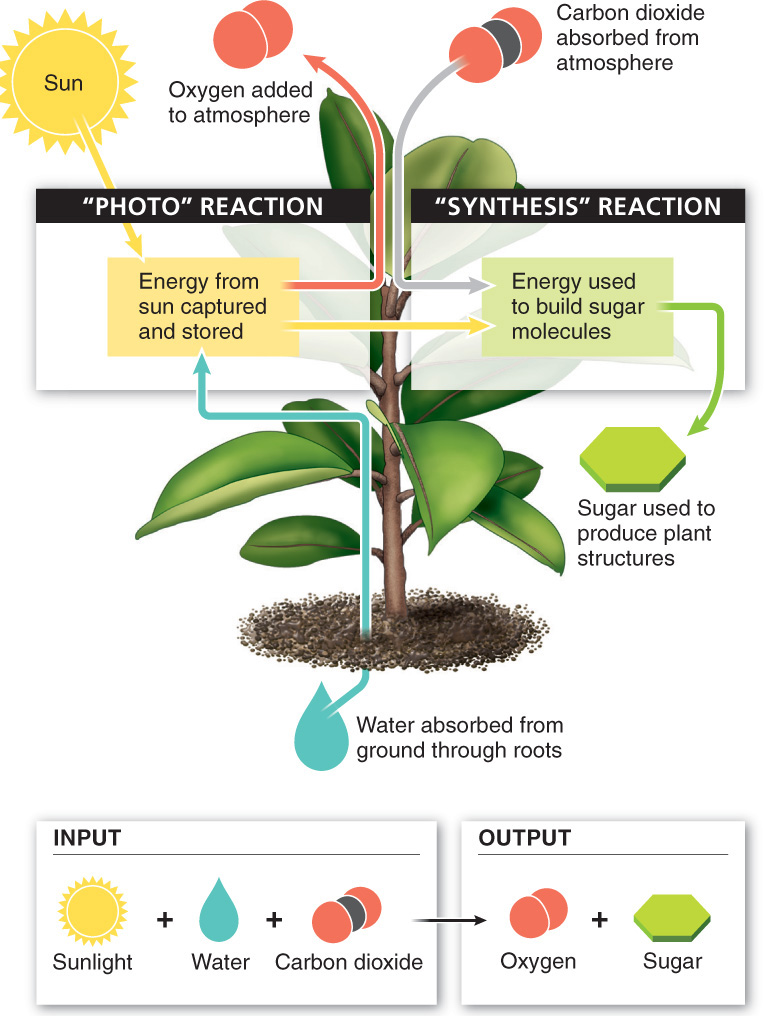
Watching a plant grow over the course of a few years can seem like watching a miracle, or at least a very subtle magic trick. Of course it’s neither, but the process is nonetheless amazing. Consider that in five years a tree can increase its weight by 150 pounds (68 kg) (FIGURE 4-9). Where does that 150 pounds of new tree come from?

When humans grow, the new tissue comes from food we eat. When plants grow, where does the new tissue come from?
Our first guess might be the soil. Could that be it? It’s easy enough to weigh the soil in a pot when first planting a tree, and then weigh it again 5 years later. After 5 years, though, we find that the soil in our planter has lost less than a pound, nowhere near enough to explain the massive increase in the amount of plant material. Perhaps the new growth comes from the water? Wrong again. Although the older and much larger tree holds more water in its many cells, the water provided to the plant does not come close to accounting for the increase in the dry weight of the plant.
The amazing truth is that most of the new material comes from an invisible gas in the air. In the process of photosynthesis, plants capture carbon dioxide gas (CO2) from the air. Using energy they get from sunlight, along with water and small amounts of chemicals usually found in soil, they produce solid, visible (and often tasty) sugars and other organic molecules that are used to make plant structures such as leaves, roots, stems, flowers, fruits, and seeds. In the process, the plants give off oxygen (O2), a by-
144
Although plants are generally the most visible organisms that can capture light energy and convert it to organic matter, they are not the only organisms capable of photosynthesis. Some bacteria and many other unicellular organisms, along with kelp and other multicellular algae, are also capable of using the energy in sunlight to produce organic materials (FIGURE 4-10).

There are three inputs to the process of photosynthesis (FIGURE 4-11): light energy (from the sun), carbon dioxide (from the atmosphere), and water (from the ground). From these three inputs, the plant produces sugar and oxygen. As we’ll see, photosynthesis is best understood as two separate events: a “photo” segment, during which light is captured, and a “synthesis” segment, during which sugar is built. In the “photo” reactions, light energy is captured and temporarily saved in energy-

TAKE-HOME MESSAGE 4.5
Through photosynthesis, plants use water, the energy of sunlight, and carbon dioxide gas from the air to produce sugars and other organic materials. In the process, photosynthesizing organisms also produce oxygen, which makes all animal life possible.
What are the three inputs for photosynthesis? What are the two outputs?
Photosynthesis is the process through which the inputs of sunlight, water, and carbon dioxide are converted into the outputs of sugar and oxygen.
145